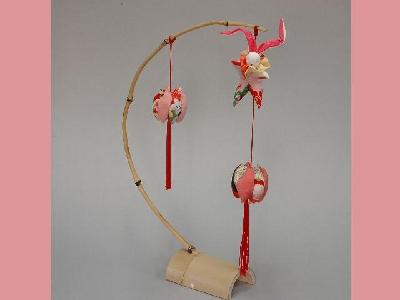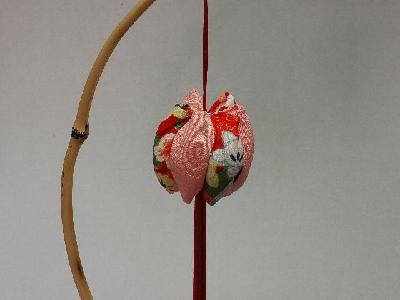|
Hanging ornaments such as these are known as 'tsurushi (hanging) kazari' or 'tsurushi hina'. These ornaments have been part of traditional culture since the Edo period, and the custom is rooted in the Izu-Inatori Onsen region. During the Hina (Girls) Festival, parents prayed for their daughter's happiness through a thread taken from a piece of old clothing. It is this hina hanging ornament that swings from both sides of the tiered stand used for the presentation of the hina dolls.
This custom is called 'sagemon' in Yanagawa, Kyushu, 'kasafuku' in Sakata, Yamagata, and 'hanging hina' in Izu-Inatori. Only these three districts have inherited this historical patrimony, documents and photos.
People entrust their wishes to the ornament. Some 110 ornaments have separate meanings. For example, the red eyes of a rabbit are supposed to have the power of causing and curing diseases. A rabbit is said to be the servant of a deity.
It is lots of fun to decorate with ornaments that suit each season. Your favorite small objects will colour your life and enrichen your heart.
This custom is called 'sagemon' in Yanagawa, Kyushu, 'kasafuku' in Sakata, Yamagata, and 'hanging hina' in Izu-Inatori. Only these three districts have inherited this historical patrimony, documents and photos.
People entrust their wishes to the ornament. Some 110 ornaments have separate meanings. For example, the red eyes of a rabbit are supposed to have the power of causing and curing diseases. A rabbit is said to be the servant of a deity.
It is lots of fun to decorate with ornaments that suit each season. Your favorite small objects will colour your life and enrichen your heart.
| [+ADDRESS] | 
|













